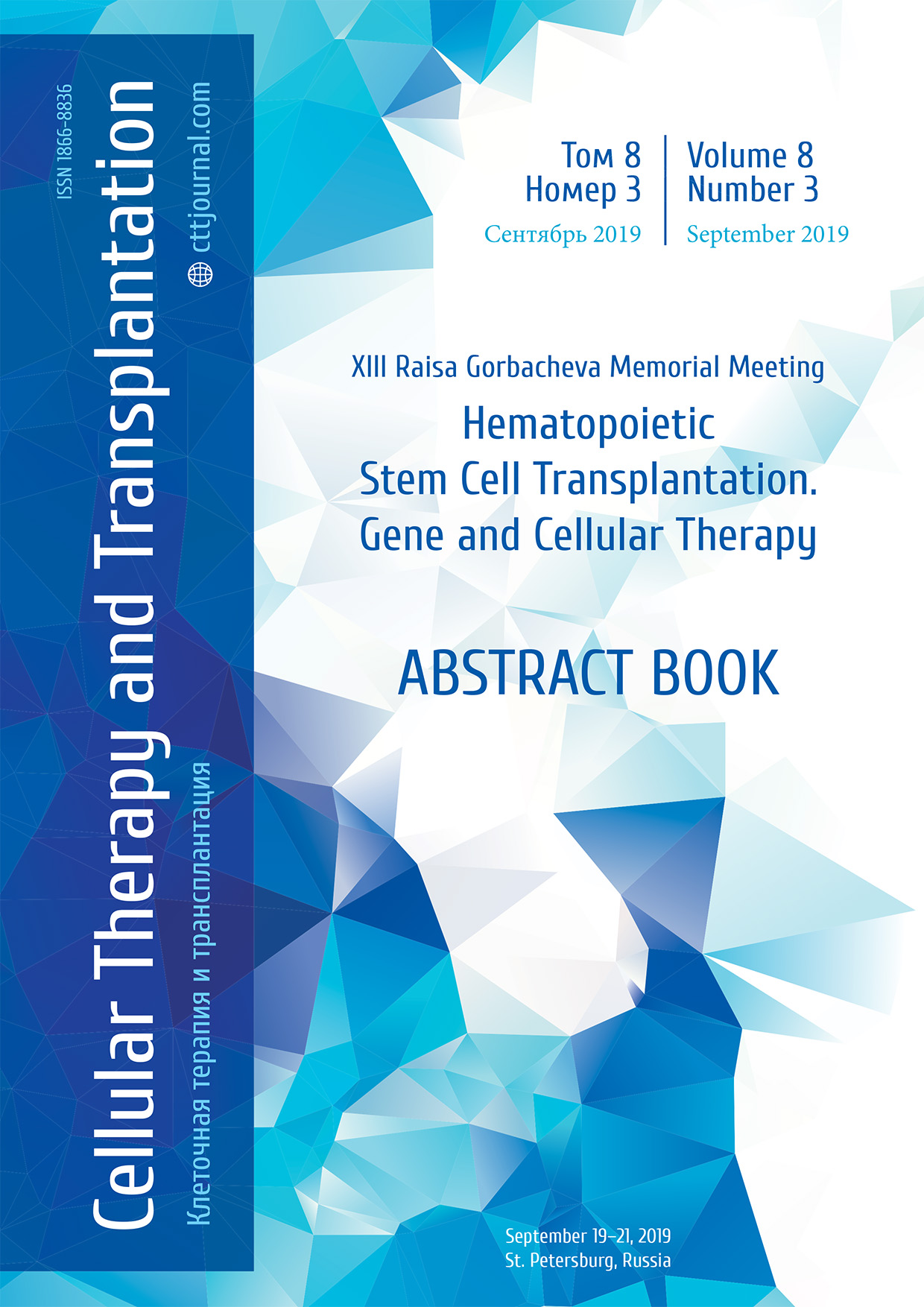Invasive fungal diseases before and after allogeneic hematopoietic stem cell transplantation in children and adults with relapsed/refractory Hodgkin’s lymphoma
Yuliya A. Rogacheva1, Marina O. Popova1, Alisa G. Volkova1, Inna V. Markova1, Alexander N. Shvetsov1, Iliya Y. Nikolaev1, Oleg V. Goloshchapov1, Svetlana M. Ignatieva2, Tatiana S. Bogomolova2, Andrey V. Kozlov1, Kirill V. Lepik1, Yury R. Zalyalov1, Lilia V. Stelmakh1, Asmik G. Gevorgian1, Anastasya V. Beynarovich1, Eugeniya S. Borzenkova1, Elena I. Darskaya1, Elena V. Kondakova1, Natalya B. Mikhailova1, Mariya D. Vladovskaya1, Sergey N. Bondarenko1, Ivan S. Moiseev1, Ludmila S. Zubarovskaya1, Nikolay N. Klimko1,2, Boris V. Afanasyev1
1 Raisa Gorbacheva Memorial Research Institute of Pediatric Oncology, Hematology and Transplantation, Pavlov First Saint Petersburg State Medical University, St. Petersburg, Russia
2 I. I. Mechnikov North-Western State Medical University, St. Petersburg, Russia
Contact: Dr. Marina O. Popova
E-mail: marina.popova.spb@gmail.com
Summary
There is only limited number of publications concerning invasive fungal disease (IFD) in lymphoma patients, especially, after allo-HSCT. There are no data about outcomes of allo-HSCT in lymphoma patients with prior IFD. This study focuses on epidemiology of IFD detected before and after allo-HSCT in children and adults with Hodgkin’s lymphoma (HL).
Patients and methods
A single-center prospective observational study included 86 patients (pts) with classical relapsed/refractory (r/r) HL who received allo-HSCT from 2002 to 2018. The median age was 27 (13-49) y.o., children (<18 yo), 13% (n=11). Allo-HSCT from matched unrelated donors (MUD) was performed in 45.4% (n=39); matched related donors (MRD), in 24.4% (n=21); nonmatched MUD, 15.1% (n=13); haplo, 15.1% (n=13), with reduced-intensity conditioning (RIC) (100%), and predominantly PTCY-based GvHD prophylaxis (71%). Primary antifungal prophylaxis was performed with fluconazole (85%); voriconazole was used as secondary prophylaxis (100%). EORTC/MSG 2008 criteria for diagnosis and response to therapy were used. In the pts with lung lesions at CT-scans before allo-HSCT, bronchoscopy with BAL examination was used. “Active IFD” means IFD diagnosed just before HSCT. Median follow-up time was 12 (1 to 71) months.
Results
Incidence of IFD before allo-HSCT was 12.8% (n=11). Invasive aspergillosis (IA) was found in all cases of IFD prior to HSCT, with lung affection in most cases. Antifungal therapy before allo-HSCT was applied in 81.8% pts with median duration of 2 months. Complete response to antifungal therapy was registered in 45.4% pts, partial response or stabilization, in 36.4%, and 18.2% pts had “active IFD”. Following allo-HSCT, all the pts received voriconazole as antifungal therapy, or secondary prophylaxis. Cumulative incidence of relapse or progression of IA after allo-HSCT was 18.2%, with a median of 49 days [19-79] after HSCT that were successfully treated with voriconazole during the post-HSCT period. Incidence of IFD after allo-HSCT for naïve patients was 17.6% (n=13/74). Etiology of IFD after allo-HSCT was as follows: IA, in 69% of patients; invasive candidiasis (IC), in 15%; mucormycosis, in 8%, and combined IFD caused by Aspergillus fumigatus + Rhizopus stolonifer was diagnosed in 8%. The median day of IFD onset after allo-HSCT was day+114 [1-489]. The main site of infection were lungs (88%), with febrile fever being the main clinical symptom (100%). Antifungal therapy was used in all patients: voriconazole, 59%; micafungin, 17%; posaconazole, in 8% of cases; lipid amphotericin B, 8%, and combination of lipid amphotericin B with caspofungin was applied in 8%. Overall survival (OS) at 12 weeks from the diagnosis of IFD after allo-HSCT was 80%. The 2-year OS in children and adult with HL after allo-HSCT was 73.3%. Development of IFD after allo-HSCT did not reduce the 2-year OS rate (69.2% vs 74%, p=0.77). The impact of prior IFD upon 2-year OS in allo-HSCT recipients was not statistically significant for all groups (63.6% vs 74.7%, p=0.47), like as between children and adults.
Conclusion
Incidence of IFD in children and adults with Hodgkin’s lymphoma before allo-HSCT was 12.8%. IFD incidence after allo-HSCT in patients with Hodgkin’s lymphoma was 17.6%. Aspergillus spp. were the major etiological agents, both before and after allo-HSCT. IFD was a late complication following allo-HSCT. Despite high IFD incidence, this infectious complication didn’t influence overall post-transplant survival in children and adults with r/r Hodgkin lymphoma.
Keywords
Invasive fungal disease, Aspergillus spp., Hodgkin’s lymphoma, infectious complications, mucormycosis, allo-HSCT.


